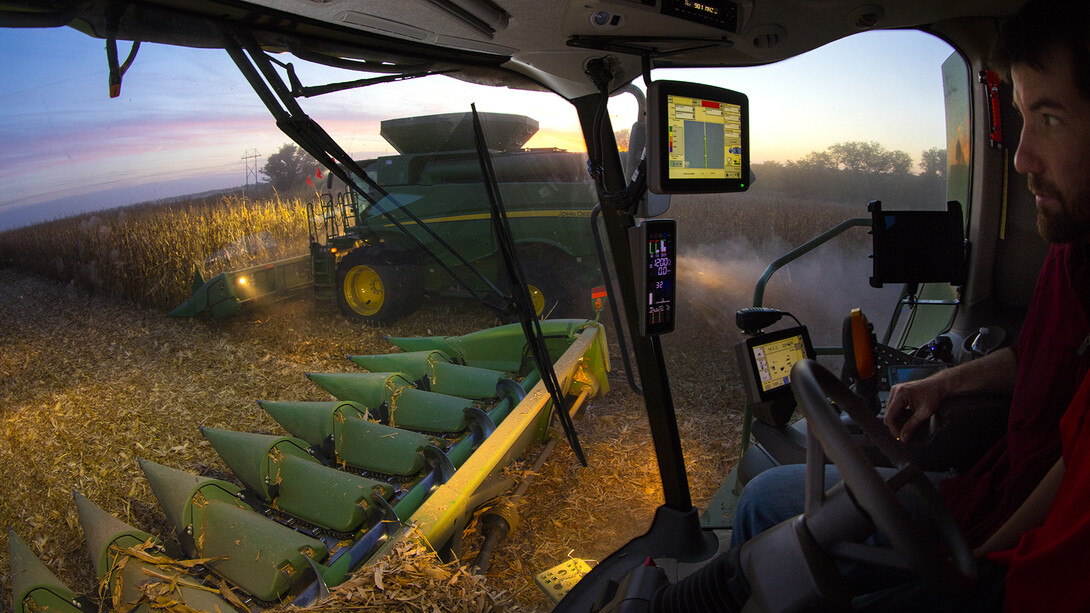
With an eye to the future of agriculture and technology, the University of Nebraska–Lincoln is seeking federal relief dollars to fund two projects that could work in tandem to grow innovation and feed economic growth statewide.
The university’s proposals — which include construction of a companion facility to a major U.S. Department of Agriculture center at Nebraska Innovation Campus, and a supercomputing expansion to the Holland Computing Center — were outlined by Ted Carter, president of the NU system, during Oct. 5 testimony before the Legislature’s Appropriations Committee. The hearing included more than 40 agencies presenting ideas on how state officials could invest federal COVID-19 relief funds from the American Rescue Plan Act of 2021.
The University of Nebraska–Lincoln proposals seek $75 million in total — $50 million to dramatically increase capacity for the Holland Computing Center and $25 million for the public-private partnership companion facility connected to the USDA National Center for Resilient and Regenerative Precision Agriculture.
“Our proposals will directly support the future of agriculture in Nebraska by supporting cutting-edge research to advance precision agriculture and crops that are more resilient,” Chancellor Ronnie Green said. “We will also provide additional high-speed computing resources to Nebraska businesses and our researchers, focusing specifically in growing opportunities in the use of artificial intelligence and critical cybersecurity needs.”

Both of the proposed facilities would be based at Nebraska Innovation Campus, allowing for greater collaborations between federal and university researchers and industry partners. Their combined work could directly benefit the state’s important ag industry.
“The companion facility will allow us to take our cutting-edge research and make it commercially viable more quickly, getting it into the hands of Nebraska’s crop and livestock producers,” Green said. “And, when coupled with the Holland Computing Center expansion, we will have vastly enhanced capabilities in precision agriculture, allowing producers to harness data and make real-time decisions.
“Ultimately, this combination has the potential to enhance the product quality and productivity for all Nebraska farmers and ranchers.”
The USDA’s national center would house up to 60 federal research scientists in partnership with the university’s Institute of Agriculture and Natural Resources. The proposed companion building would serve as a startup space, allowing for important collaborations between university, federal, state and private-sector experts.
As proposed, the request for $25 million in federal funds would be matched with private funds. University officials estimate that over a 10-year period, the $25 million investment would allow for more than $500 million in capital investment and research and development spending in the state.

The Holland Computing Center project would allow the university to expand capacity for high-speed computing resources available to private companies and campus researchers. It includes infrastructure designed to enhance artificial intelligence computing and cybersecurity, allowing for greater collaboration with the NU-based National Strategic Research Initiative and other cutting-edge partners.
Other areas of research that could benefit from the expansion include machine learning, data science, manufacturing and medical.
As proposed, the new data center would benefit Nebraska through increased workforce development, including jobs for highly skilled graduates, and research and development.
“The chancellors and I have spent months talking about what we as Nebraska’s public university system could bring forward that would have the most meaningful and long-lasting impact for the people of our state,” Carter said. “These are once-in-a-lifetime opportunities to change the trajectory for Nebraska for years to come — solutions that our university is uniquely positioned to deliver.
“We look forward to working closely with our elected leaders in the weeks and months ahead to advance our state through strategic use of these recovery dollars.”
Carter’s testimony was part of the response to Legislative Resolution 178, an interim study to solicit input on how to spend federal funds from the American Rescue Plan Act of 2021. The federal proposal is expected to make more than $1 billion available to help Nebraska recover from the impact of COVID-19 on the economy, public health, education, state and local government, individuals and businesses.
The University of Nebraska–Lincoln’s two proposals are among nine NU system concepts seeking American Rescue Plan funds. Review the NU system’s proposed projects.








